Siem Reap greeted us with a refreshing abundance of $0.50 draft beer. Naturally, the 4:30 am wake-up call for the sunrise trip to Angkor Wat was missed due to a strong hangover. The next day was a different story. We were determined to see the 800-year-old temples; a tuk-tuk was on its way.
As you take the ride from the city centre, a mixture of high-class housing mixed with the occasional “slums” line the streets. The Khmer Rouge regime of the 70’s hit the population hard, but Cambodians have made the best of the worst situations. Families sleeping in hammocks line the roads, selling whatever they can to get by, juxtaposed against 2-story buildings with car-lined driveways.
A resilient and friendly people, Cambodians are smiling and willing to help anyone, even if it is for a small fee. They take notice of travelers who try to learn the language, and smile even if you mispronounce “Akon!” (Thank you.)
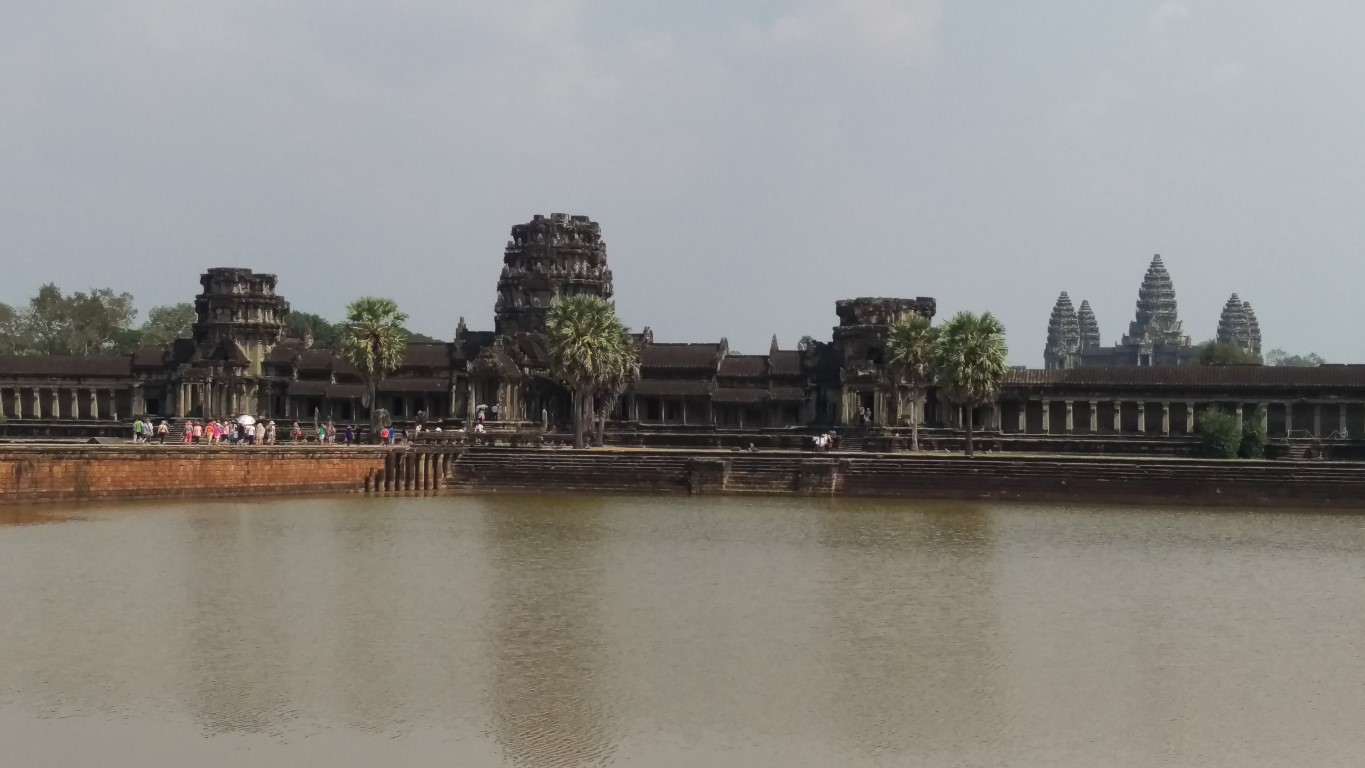
On our way to Angkor Wat, we reached the gates to the grounds. Food vendors lined the road entering the complex, and with more stray dogs than people at them it gave me hope that we would have a tourist-less day. On the right, a lake sat glass-like, reflecting the largest temple, the first stop at the beginning of our tour.
Our driver, a fellow named Nat, cost $15 for the day. He politely pointed out the main entrance and told us to meet him in the parking lot after we finished.
The outer rim of the complex was breathtaking. Spires of ancient stones pierced the skies against the hot midday sun as we walked across the bridge into the largest temple in the area.
My previous thoughts of there not being many tourists had instantly vanished when we reached the top of the first set of steps. There were hundreds of people meandering towards our first stop. Amid the crowds, there was, at least, some walking room, so it was apparent that the crowds would dissipate once we got to the main gates of the temple.
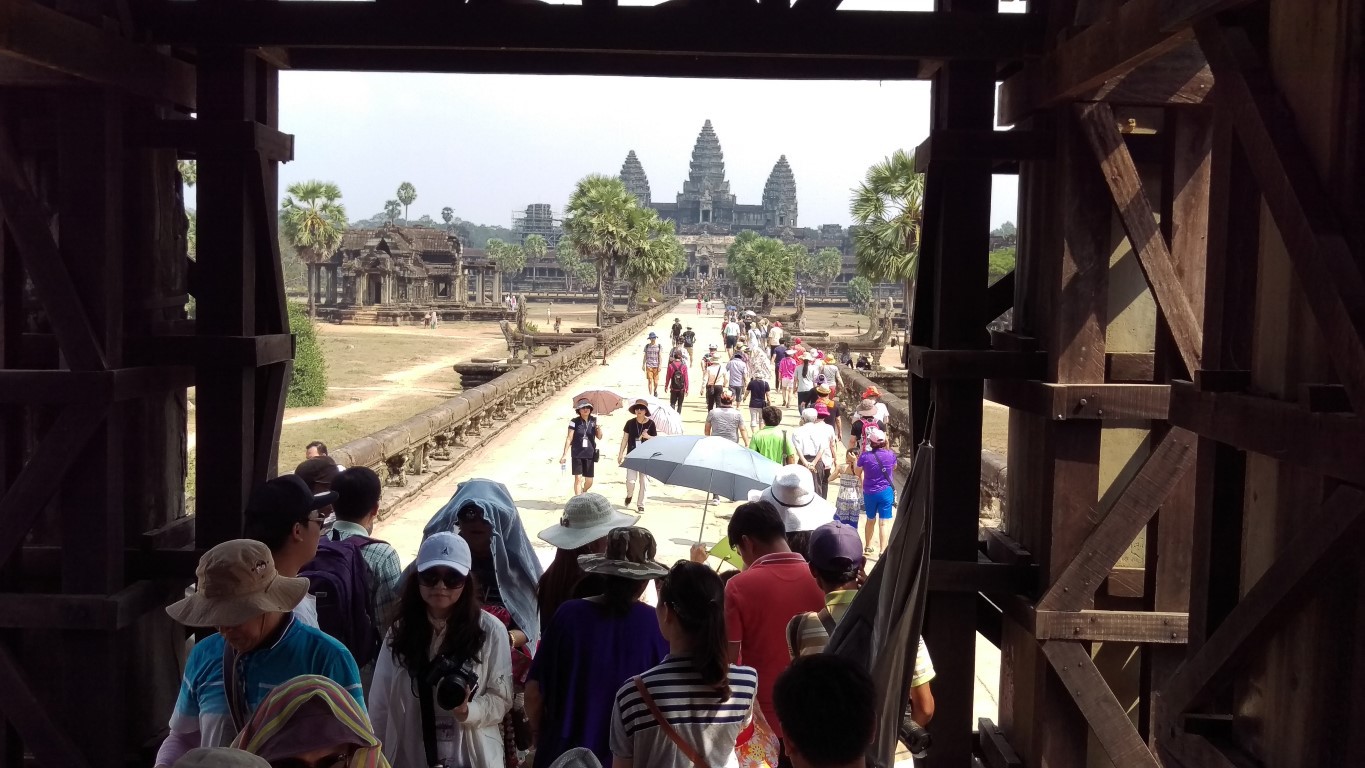
The sun was beating down on the crowds and sweat dripped from the faces of everyone in view. An odd scene, considering some of the people in the crowds were born and raised in the humid climate. Before I hit the third outlying temple, my head started to spin, and I felt like I was going to collapse. Suddenly, going to the temple on the hottest day of the last few weeks didn’t seem like the best idea.
I had a bad bout of heat exhaustion. Luckily, there are dozens of vendors lining the entrance to the main temple that gladly sold large bottles of water and offered huge chunks of ice to the suffering pale girl at stall #3. After about 20 minutes of my fella tossing water at me and icing the back of my neck, I felt good enough to continue.
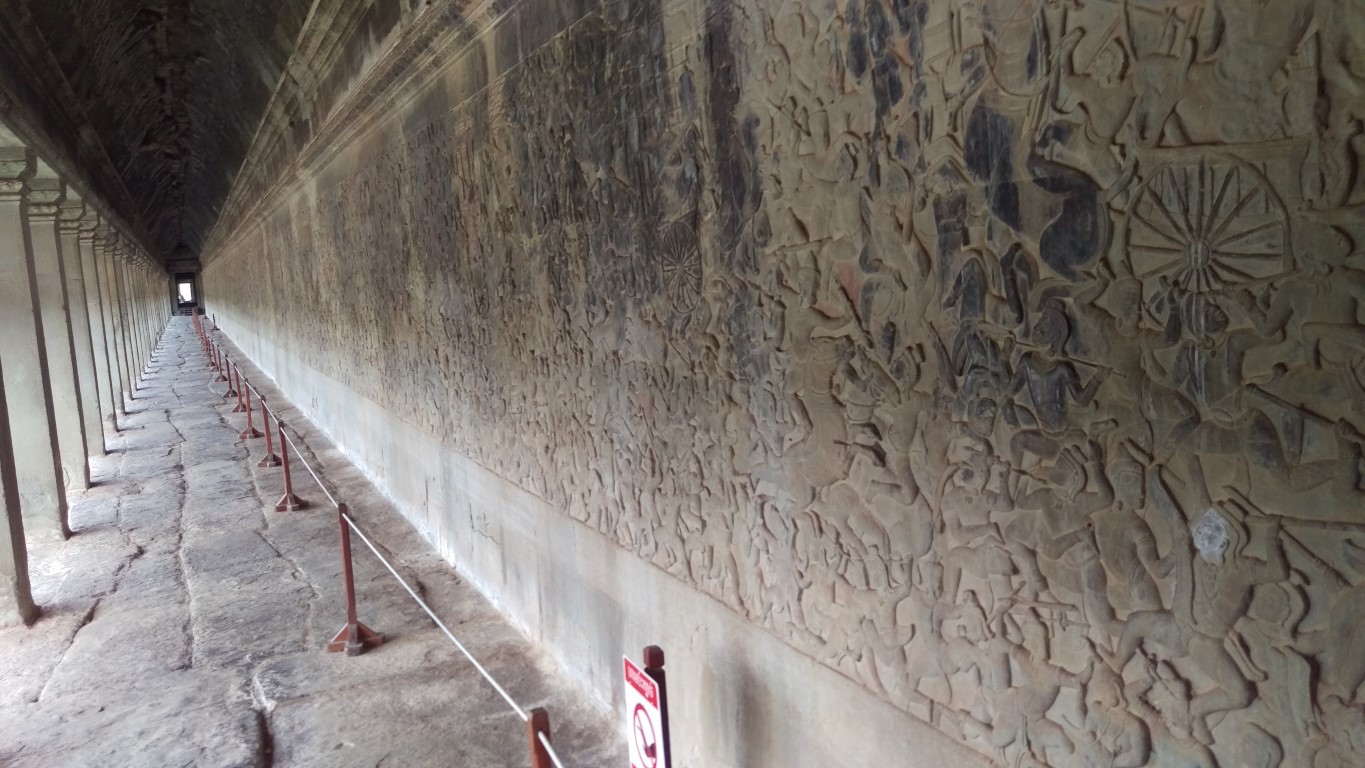
The tour trail takes you around the inner circle of the main temple, which passing directly by a wall – almost a city block long – adorned with of some of the most intricate carvings I’ve ever seen. Near the end of the circle, you find offerings to Buddha and statues dressed in orange robes appreciating the deity.
We left the temple happy and grabbed a bottle of water on the way out, on our way to the next stop: Bayon.
Figures lined the road leading up to the gates on either side.
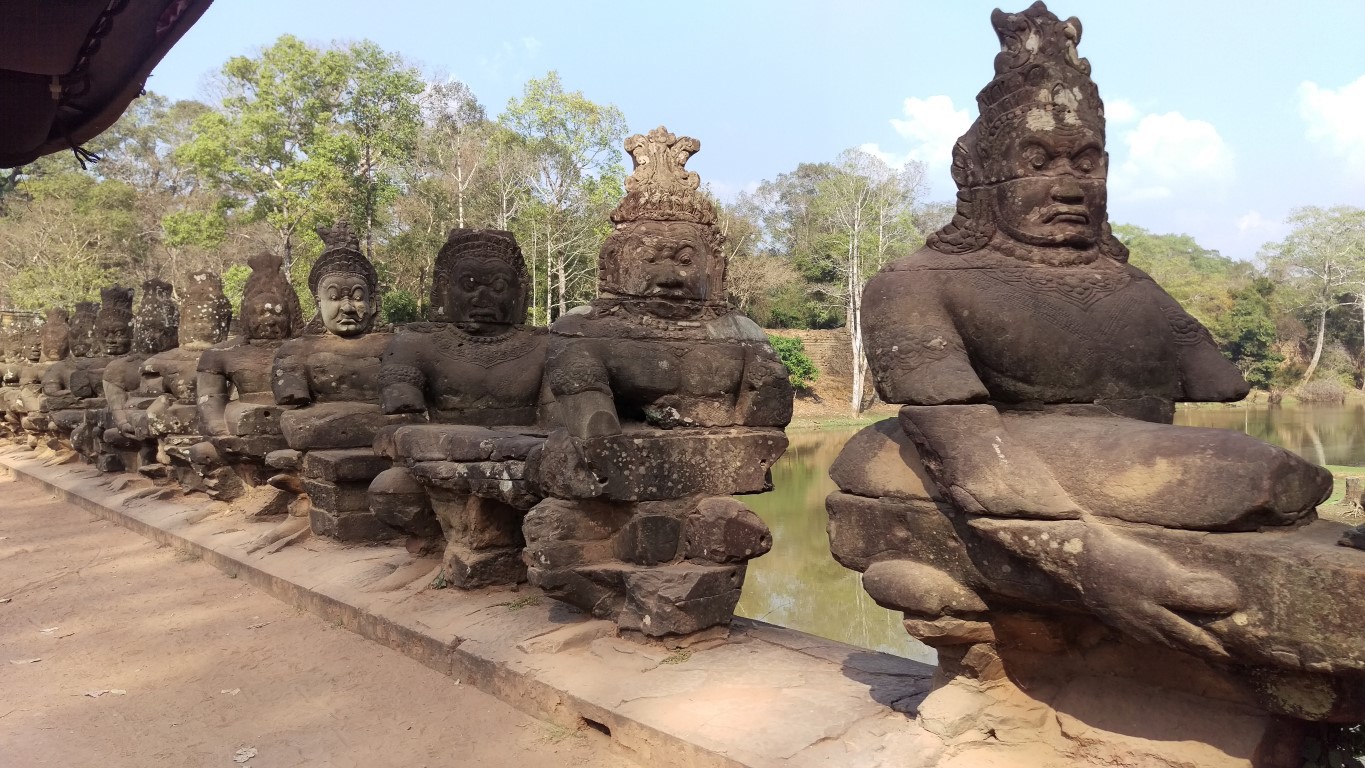
I said the spires at Angkor were impressive, but Bayon was a step above. We arrived at the east entrance and climbed two flights of steep scaffold-like steps to reach the inner circle of the temple. Bayon temple has 49 towers with four faces on each. The complex had an estimated 200 faces in the past. Since degradation and the elements have been so hard on the temple, it’s hard to know.
Some entrances to the inside of the temple are blocked off, but the path gives a clear view of the grounds.
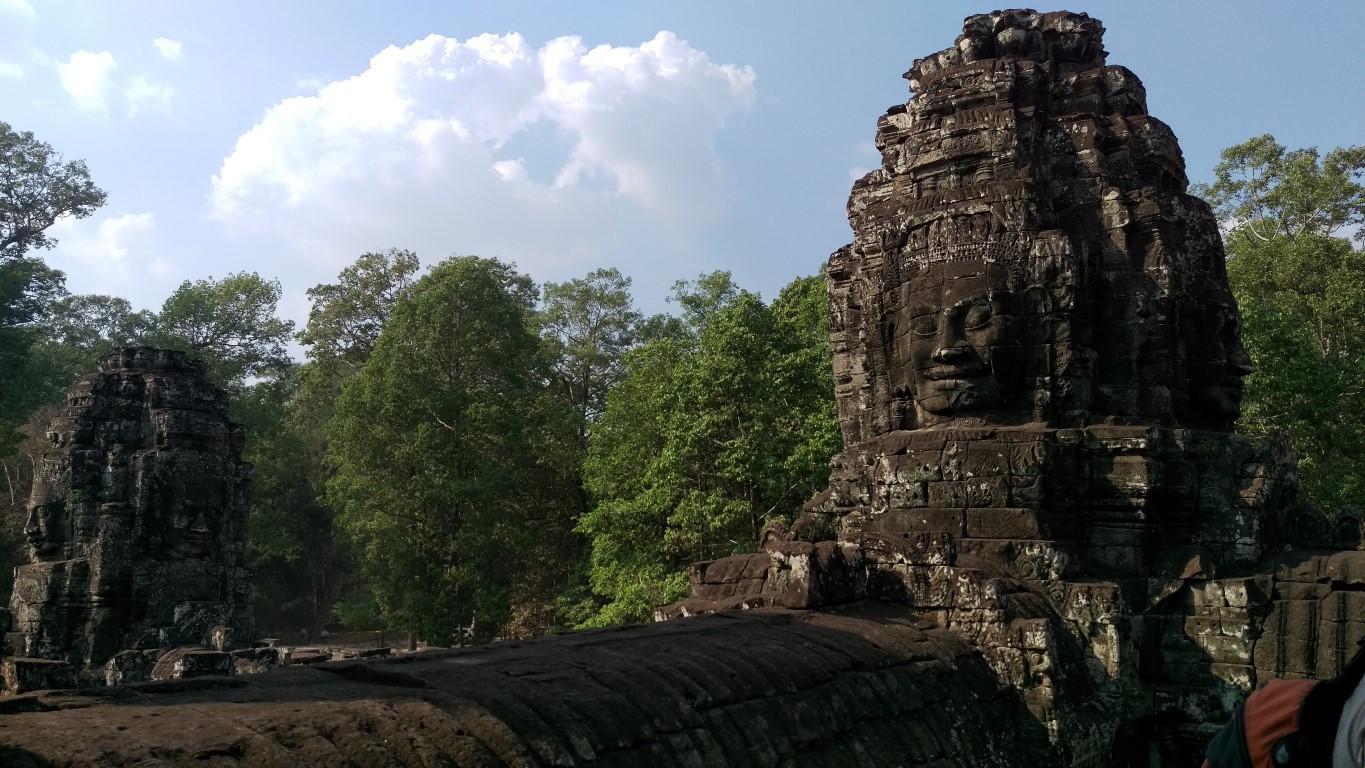
Leaving the temple with Nat, we drove around the corner and saw that Monkeys and wild pigs roam the grounds, indifferent of the hustle and bustle going on around them. More food stalls and trinket vendors lined the roads around the grounds. Making sure I didn’t pass out again, we drank 7L of water along the way. Unfortunately, conservation efforts had closed two of the temples that I wanted to see, Angkor Thom and the Terrace of the Elephants.
The last temple of the day was Tah Prohm, made famous by its use in Tomb Raider. Impressive in its ruin, the temple is overgrown with Banyan trees and sits at the end of a dirt road. Walking down the path, you hear strings and a twang of a traditional Cambodian band that set up on the road. Built sometime in the 11th century, the temple sits in pieces of its former self, with rocks and parts of its once beautiful roadways littering the outside of the walls. Tah Prohm is preserved this way on purpose. The conservation authority decided to leave the temple in partial ruin to preserve a sense of authenticity for visitors, hoping they will feel like an early explorer.
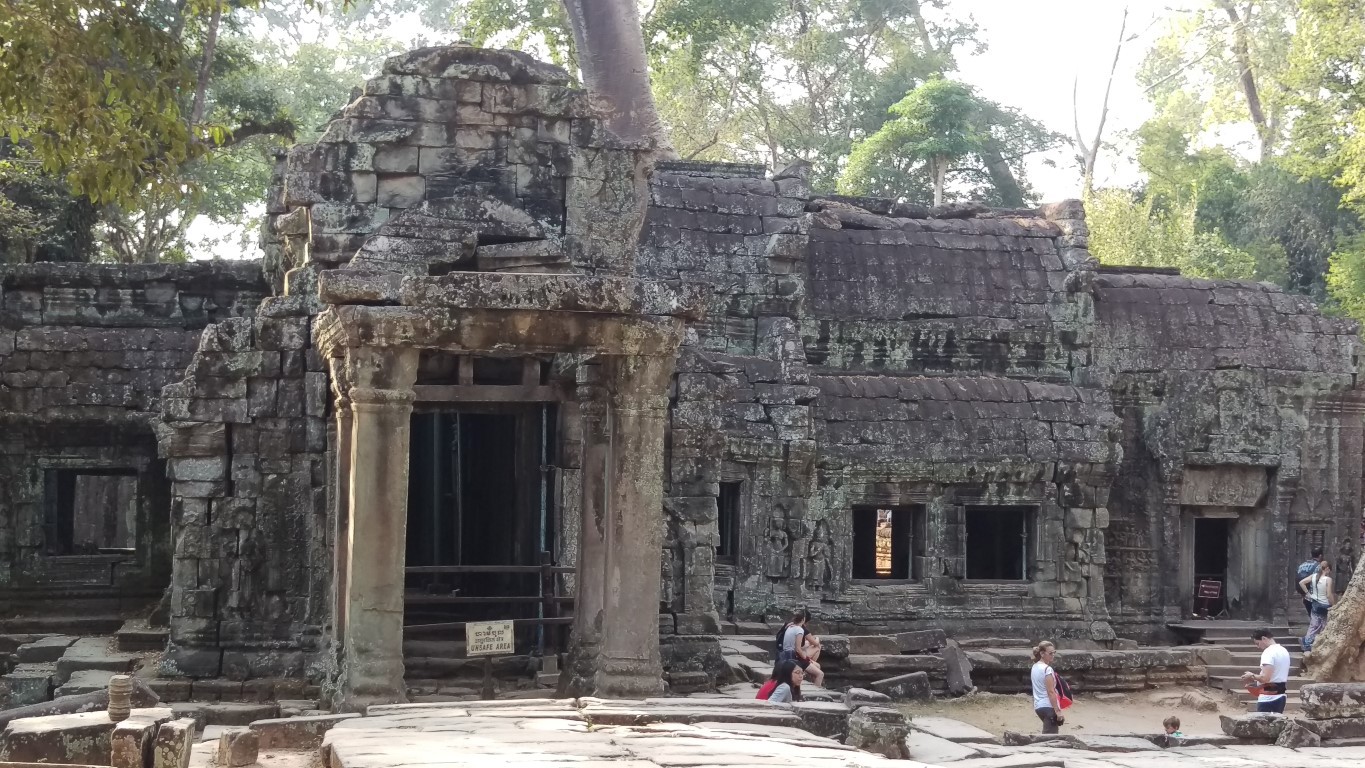
Tips
Save on Fares
Admission costs $25USD for one day, and $30USD for three days. With a one-day pass, you can re-enter if you think you missed something or want to view the sunset in the evening.Take a self-guided tour with one of the many downloadable temple tour-guide apps to save some cash. (Tour guides are available at $15USD per temple.)
Getting Around
Tuk-tuks are everywhere in Siem Reap, and they will all offer you a tour of the temples. How many you visit and how long you’re out are largely up to your negotiation skills. Use four temples and $15 as a benchmark and see what you can get!
Driven by a passion for travel and all things marketing. Fuelled by tea and sarcasm, she’s a gypsy at heart with a knack for telling stories.
